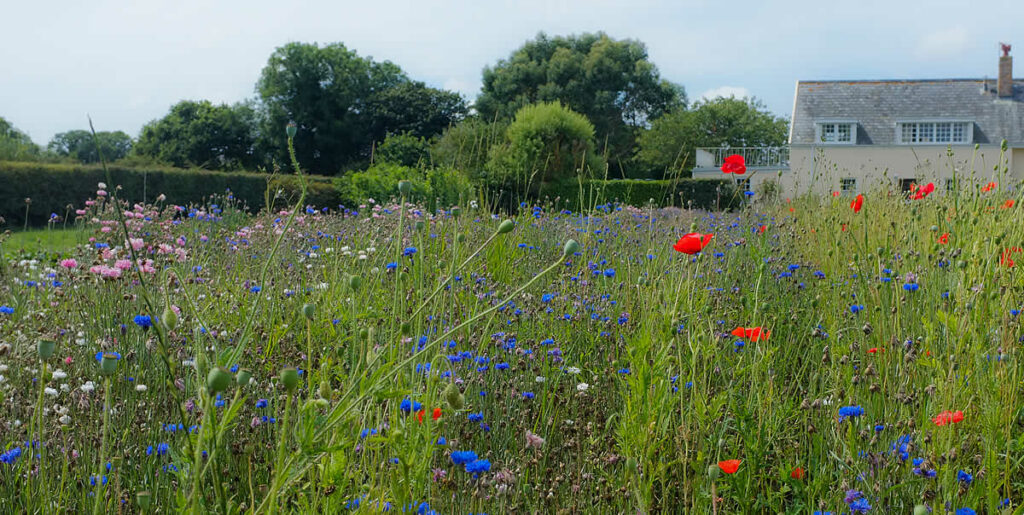How to Create, Restore, and Manage a Wildflower Meadow in Yorkshire
You’ve seen them while driving out of town on a country road, or walking through a park on a spring day: wildflower meadows, bursting with colour and buzzing with life. If you’ve ever wondered how to create one of these beautiful landscapes in your own backyard, you’re in luck. Meadow creation, restoration, and management can be done by anyone with a little bit of know-how and the right resources.
In this article, we’ll cover the basics of creating, restoring, and managing a wildflower meadow in Yorkshire. We’ll discuss what types of wildflowers you can plant, how to choose the right location for your meadow, and ways to care for your new landscape. So get ready to roll up your sleeves and get planting!
Overview of Wildflower Meadows in Yorkshire
Meadows are areas of grassland where the dominant vegetation is grass, herbs, and flowers. They can be found all over the world, but Yorkshire is a particularly good place to see them because of its diverse landscapes and mild climate.
There are many different types of meadow, but the most famous one is the wildflower meadow. These meadows are full of beautiful wildflowers, and they provide important habitats for wildlife. In Yorkshire, there are many different species of wildflowers, so there’s something for everyone.
Meadow creation, restoration, and management can be difficult tasks, but they’re well worth the effort. If you’re interested in creating a wildflower meadow in Yorkshire, please read on.
Understanding the Different Wildflower Species in Yorkshire
When you’re looking to create, restore or manage a wildflower meadow in Yorkshire, it’s important to understand the different species that are found in the area.
The flora of Yorkshire is incredibly diverse, with a huge range of wildflowers that can be found in meadows. You can find everything from delicate flowers like bluebells and primroses, to sturdy plants like thistles and daisies.
Each species has its own unique needs, so it’s important to consider all of them when creating or managing a meadow. If you want your meadow to be as diverse and healthy as possible, make sure to include a range of different wildflower species.
What Is the Future of Wildflower Meadows in Yorkshire?
The meadows of Yorkshire are an important part of the ecosystem. They provide a habitat for many different species of plants and animals, and they also play a role in the local economy.
But the future of wildflower meadows is uncertain. Climate change is making it harder for these meadows to survive, and many of them are in danger of being lost forever.

You can help protect these meadows by creating, restoring, and managing them wisely. You can also help spread the word about their importance and encourage others to do the same.
Another way to help conserve wildflower meadows is to get involved in conservation efforts. There are several organizations that work to restore and protect meadows in Yorkshire, such as the Yorkshire Wildlife Trust and the Yorkshire Beekeepers Association. You can join these organizations and volunteer to help with their initiatives.
You can also help by using fewer pesticides and herbicides in your gardens. These chemicals can harm the meadows, making them less hospitable for the plants and animals that rely on them for their survival.
You can support legislation protecting wildflower meadows and other important ecosystems in the Yorkshire area. By advocating for these laws, you can help ensure that these meadows will be around for future generations to enjoy.
Wildflower meadows are an essential part of the ecosystem in Yorkshire. We must take steps to protect, restore, and manage these meadows in order to safeguard them for years to come. This can be done through creating, restoring, and managing meadows wisely, becoming involved in conservation initiatives, reducing the use of harmful chemicals, and advocating for protective legislation. By doing these things, we can ensure that the future of these meadows is safe and secure.
Steps to Create and Restore a Wildflower Meadow
Creating a wildflower meadow is easy and rewarding, but there are a few steps to ensure the meadow is successful. First, select a space that has either full sun or partial shade. A good way to identify the right area is to identify where existing wildflowers are growing naturally.
Wildflowers normally require poorer soils (i.e. less nutrient-rich) Once you’ve identified the right area, preparing the ground correctly, and in some cases adding a small amount of organic matter will help provide better drainage, and a small amount may help the initial germination.
Next, it’s time to restore local species of wildflowers back into Yorkshire’s meadows and woodlands. There are plenty of native varieties available at nurseries, as well as seed mixtures that you can buy and sow. Some common species in North Yorkshire are Oxford Ragwort, Kidney Vetch, Oxeye Daisy and Cowslip.
Finally, make sure you manage your meadow by cutting back vegetation early in the season, for hay in late summer/early autumn followed by final grazing or cutting before winter takes hold. This will remove dead material from your flowerbeds and discourage weed growth, allowing native plants to flourish around your newly created meadow!
How to Manage a Wildflower Meadow in Yorkshire
Managing a wildflower meadow in Yorkshire is critical to its long-term success. The good news is that most of the work doesn’t need to be done every year; it’s more a case of checking in with your meadow periodically.
To manage a wildflower meadow in Yorkshire, you need to keep an eye on the weeds; they can take away resources from the native wildflowers if left unchecked. You can reduce weeds through regular hand-weeding or the use of weedkillers (selectively) if needed.
Mowing should also be done at the right time of year to ensure that peak flowering is maintained. Late Summer cutting keeps wildflowers from going to seed and ensures that the seed bank stays heavily populated with the desired species.
Finally, you should also carry out periodic soil tests, or get professional advice on potential soil amendments or fertilizers which will help create ideal conditions for wildflowers. This should be done every few years and will give you an indication of whether microbial activity and nutrient levels are satisfactory for your meadow.
Challenges of Maintaining a Wildflower Meadow
Maintaining a wildflower meadow is no small feat and it comes with its fair share of challenges. You’ll need to be vigilant about controlling invasive species, as well as monitoring for diseases and pests. You’ll also have to manage the soil pH to ensure that the wildflowers have everything they need to thrive.
In addition, you’ll find that some plants will naturally spread faster than others, or will start to dominate the space. This means that you’ll need to do regular thinning and reseeding, which can be a time-consuming task. And of course, the weather can always play a part and throw a wrench into your plans. In Yorkshire, this often means having to deal with wet summers and chilly winters which can devastate certain flowers and delay their growth.
Fortunately, with regular observation and attention, you can manage these issues and keep your wildflower meadow looking beautiful!
Wildflower Seeds - Don't Need Much
So, if you’re inspired to create a wildflower meadow of your own, get planting! The great news is that you don’t need much space to make it happen, as little as 5m2 will do. Just make sure the soil is well-drained and avoid frost pockets, and get ready to enjoy a riot of colour and fragrance from early summer until autumn.
Wildahome – Wildflower Seeds for Yorkshire – Region Specific
Each year we harvest wildflower seeds from our own farms, and partner farms and sites throughout the UK. The benefit of seeds harvested from specific areas or regions is that they are the correct seeds for the locality and soil conditions, and therefore provide a greater chance of germination.
Wildahome Yorkshire wildflower seeds are available directly from us and have been harvested from sites around Yorkshire the previous season.
Frequently Asked Questions
Where can I purchase your locally sourced wildflower seeds in Yorkshire?
Wildahome is one of the UK’s leading growers and suppliers of wildflower seeds. Sourcing from our own and partner farms throughout the UK, we supply native British wildflower seeds for Yorkshire and nearby county projects
What are the best wildflowers to plant or sow in Yorkshire?
Some species of wildflowers will be found throughout the UK, and others are specific to certain areas, counties or soil types. Wildahome would advise sowing seeds sourced locally or containing wildflower seeds suited to your location or soil type.
When is the best time to sow or plant wildflower seeds in Yorkshire?
Wildflower seeds and wildflower seed mats can be sown throughout the year, but the optimal times are generally early Autumn or Mid Spring. However, this varies by region and general yearly weather conditions. Planting wildflower seeds in Sussex usually is in Autumn and Spring.
How do I properly prepare the soil for wildflower planting?
Ensuring soil has a low nutrient level and then gently breaking up/disturbing the soil’s surface. If the soil is heavy clay, adding some compost or sand may sometimes be necessary – please check beforehand.
What is the recommended spacing for wildflower seeds to ensure healthy growth?
If you are using a 100% wildflower seed mix, we would recommend 1-2g per m2, and if you are using an 80/20 wildflower seed and grass mix, this would be 5g m2

